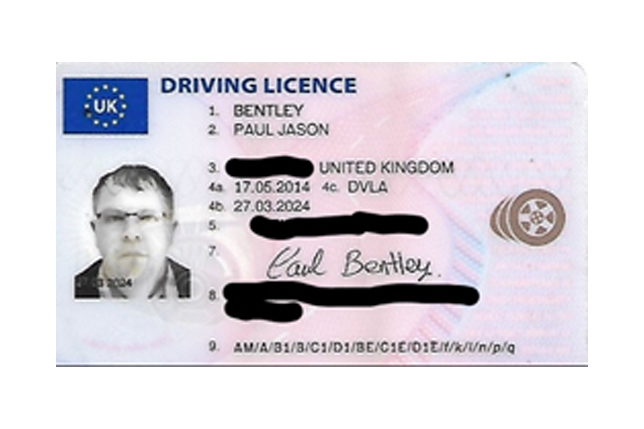
Driving Licence Information. What Does It All Mean?
Your driving license contains lots of information. Some of it is obvious such as your name and address but some is less obvious.
If we look at the front of a full driving licence, we have the following information
- 1 is your surname
- 2 is your forenames
- 3 is your birth date and place of birth
- 4a is when your photocard was issued
- 4b is the date of expiry. Photocard licenses are valid for 10 years from the date of issue.
- 4c is who it was issued by
- 5 is your driving license number. It’s made up of a number of letters and numbers
For example, HARRI603249MP9AB 20 would mean
1st 5 letters of your surname followed by your date of birth but mixed up so this would be a birthdate of 24th March 1969. The MP is the first letter of your surname. Then there is a random digit which is usually 9 and 2 computer check digits. The last number is the issue code.
7 and 8 is signature and address
9 is the categories of entitlement held for this license
Now lets look at the back of a driving license
Again we have a series of rows and columns with letters and numbers like this :
Column 9 is the entitlement for that category of vehicle. Some of the most common ones are explained below:
Mopeds
Category AM
You can drive 2-wheeled or 3-wheeled vehicles with a maximum design speed of over 25km/h (15.5mph) but not more than 45km/h (28mph).
This category also includes light quad bikes with:
- unladen mass of not more than 350kg (not including batteries if it’s an electric vehicle)
- maximum design speed of over 25km/h (15.5mph) but not more than 45km/h (28mph)
Motorcycles
Category A1
You can drive light motorbikes with:
- an engine size up to 125cc
- a power output of up to 11kW
- a power to weight ratio not more than 0.1kW/kg
This category also includes motor tricycles with power output up to 15kW.
Category A2
You can drive motorbikes with a:
- power output up to 35kW
- power to weight ratio not more than 0.2kW/kg
The motorbike must also not be derived from a vehicle of more than double its power.
You can also drive motorbikes in category A1.
Category A
You can drive:
- motorbikes with a power output more than 35kW or a power to weight ratio more than 0.2kW/kg
- motor tricycles with a power output more than 15kW
You can also drive motorbikes in categories A1 and A2.
Light vehicles and quad bikes
Category B1
You can drive motor vehicles with 4 wheels up to 400kg unladen or 550kg if they’re designed for carrying goods.
Cars
Category B – if you passed your test before 1 January 1997
You’re usually allowed to drive a vehicle and trailer combination up to 8,250kg maximum authorised mass (MAM). View your driving licence information to check.
You’re also allowed to drive a minibus with a trailer over 750kg MAM.
Category B – if you passed your test on or after 1 January 1997
You can drive vehicles up to 3,500kg MAM with up to 8 passenger seats (with a trailer up to 750kg).
You can also tow heavier trailers if the total MAM of the vehicle and trailer is not more than 3,500kg.
You can drive motor tricycles with a power output higher than 15kW if you are over 21 years old.
Physically disabled drivers with provisional category B entitlement will also have provisional entitlement to ride category A1 or A motor tricycles.
Non-disabled drivers can no longer ride motor tricycles with a provisional category B licence.
Category B auto
You can drive a category B vehicle – but only an automatic one.
Category BE
You can drive a vehicle with a MAM of 3,500kg with a trailer.
The size of the trailer depends on the BE ‘valid from’ date shown on your licence. If the date is:
- before 19 January 2013, you can tow any size trailer
- on or after 19 January 2013, you can tow a trailer with a MAM of up to 3,500kg
Medium-sized vehicles
Category C1
You can drive vehicles between 3,500 and 7,500kg MAM (with a trailer up to 750kg).
Category C1E
You can drive C1 category vehicles with a trailer over 750kg.
The combined MAM of both cannot exceed 12,000kg.
Large vehicles
Category C
You can drive vehicles over 3,500kg (with a trailer up to 750kg MAM).
Category CE
You can drive category C vehicles with a trailer over 750kg.
Minibuses
Category D1
You can drive vehicles with:
- no more than 16 passenger seats
- a maximum length of 8 metres
- a trailer up to 750kg
Category D1E
You can drive D1 category vehicles with a trailer over 750kg MAM.
The combined MAM of both cannot exceed 12,000kg.
Buses
Category D
You can drive any bus with more than 8 passenger seats (with a trailer up to 750kg MAM).
Category DE
You can drive D category vehicles with a trailer over 750kg.
A full list of categories can be found here https://www.gov.uk/driving-licence-categories
Colum 10 is when it is valid from and column 11 is when it is valid until.
Colum 12 tells you what conditions you must meet to drive that category. There are many codes but the most common one is 01 which means eyesight correction, for example glasses or contact lenses. If you have 01 in column 12 then you must always wear glasses or contact lenses when driving.
A full list of codes can be found here https://www.gov.uk/driving-licence-codes
